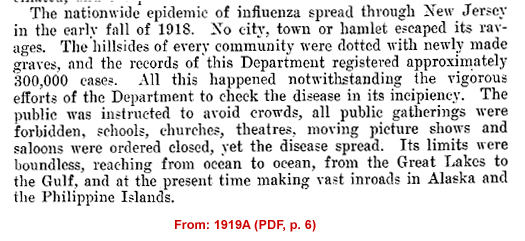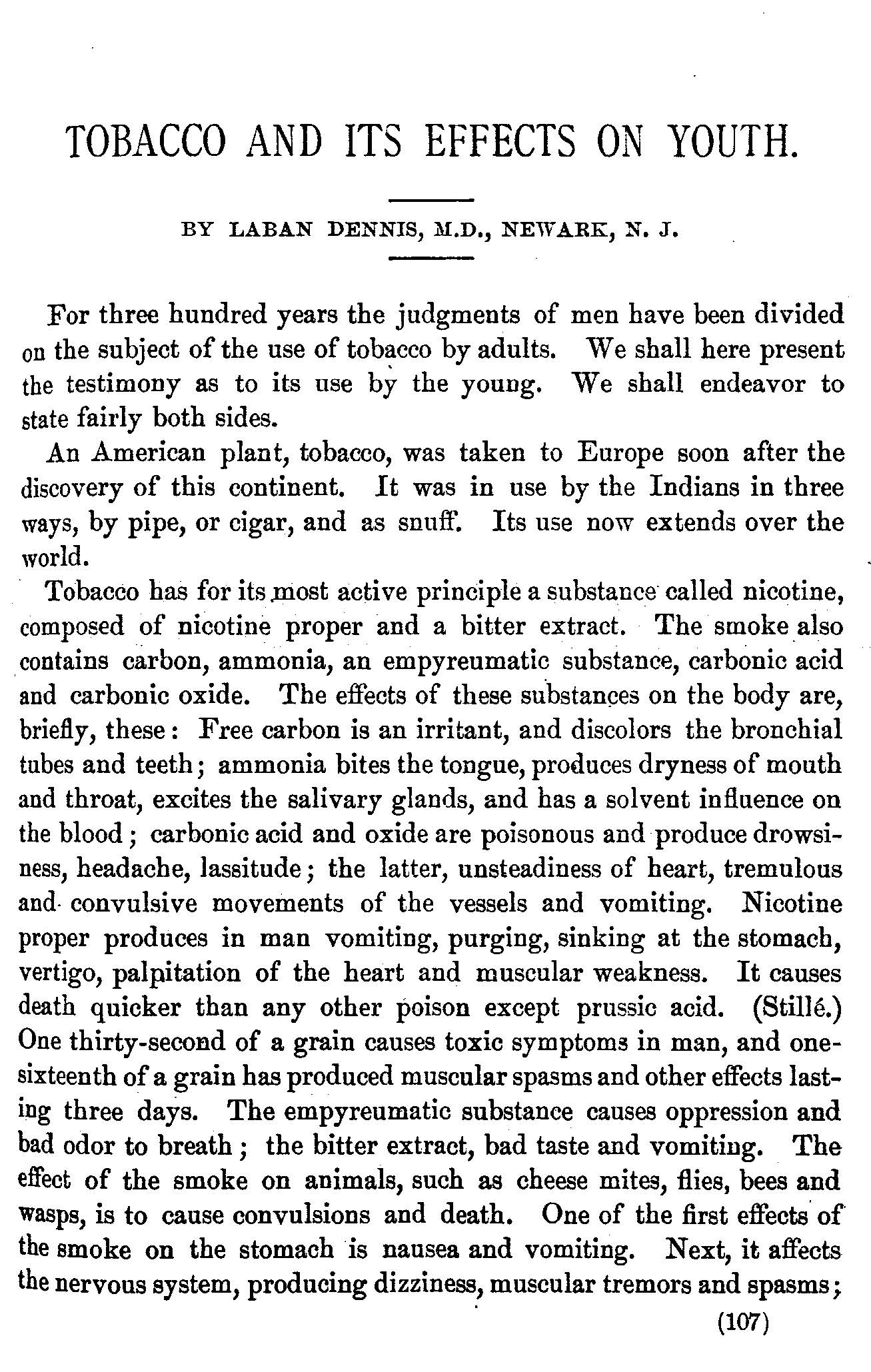
The nationwide epidemic of influenza spread through New Jersey in the early fall of 1918. No city, town or hamlet escaped its ravages. the hillsides of every community were dotted with newly made graves, and the records of the Department registered approximately 300,000 cases. All this happened notwithstanding the vigorous efforts of the Department to check the disease at its incipiency. The public was instructed to avoid crowds all public gatherings were forbidden, schools, churches, theatres, moving picture shows and saloons were ordered closed, yet the disease spread. Its limits were boundless, reaching from ocean to ocean, from the Great Lakes to the Gulf, and the present time making vast inroads in Alaska and the Philippine Islands.

HATTING.
AS AFFECTING THE HEALTH OF OPERATIVES.
BY L. DENNIS, M. D.
At the request of the State Board of Health, of New Jersey, I have, for some months past, been investigating the sanitary relations of the business of hatting.
Inquiry reveals the fact that in the U. S. Medical Library, at Washington, there is no entire volume in English on this subject.
Neither in the Astor Library, in New York, nor in the Mercantile Library,·in the same city, could anything be found on the healthfulness of trades in general. Which facts would seem to indicate the need of an awakening of our individual physicians as well as boards of health to a more thorough examination of hygienic conditions of factory life.
A paper by Dr. J. Addison Freeman, of Orange, on the " Mercurial Diseases among Hatters," appeared in the published transactions for 1860, of the New Jersey State Medical Society, in which it was stated that more than one hundred cases of this disease had occurred in Orange alone. The symptoms were : "Swelling and ulceration of the gums, loosening of the teeth, fetor of the breath, abnormal flow of saliva, tremors of the extremities, or a shaking palsy and frequently some febrile action." These cases recovered under the usual remedies for mercurial salivation, especially iodide of potassium, or without any treatment if the work was abandoned for a time. This disease occurred exclusively among the hat finishers, and the presence of mercury having been established by chemical tests in the hat bodies before going through the process of finishing, it seemed clear that the hot iron volatilized the mercury, and the close, ill-ventilated rooms favored the absorption of it in the system, and so the workmen were poisoned. The greater prevalence than usual, of the disease at that time, was found to be due to the use of a larger amount of mercury in order to render poor

TOBACCO AND ITS EFFECTS ON YOUTH.
BY LABAN DENNIS, M.D,, NEWARK, N. J.
For three hundred years the judgments of men have been divided on the subject of the use of tobacco by adults. We shall here present the testimony as to its use by the young. We shall endeavor to state fairly both sides.
An American plant, tobacco, was taken to Europe soon after the discovery of this continent. It was in use by the Indians in three ways, by pipe, or cigar, and as snuff, Its use now extends over the world.
Tobacco has for its most active principle a substance called nicotine, composed of nicotine proper and a bitter extract. The smoke also contains carbon, ammonia, an empyreumatic substance, carbonic acid and carbonic oxide. The effects of these substances on the body are, briefly, these: Free carbon is an irritant, and discolors the bronchial tubes and teeth; ammonia bites the tongue, produces dryness of mouth and throat, excites the salivary glands, and has a solvent influence on the blood; carbonic acid and oxide are poisonous and produce drowsiness, headache, lassitude; the latter, unsteadiness of heart, tremulous and- convulsive movements of the vessels and vomiting. Nicotine proper produces in man vomiting, purging, sinking at the stomach, vertigo, palpitation of the heart and muscular weakness. It causes death quicker than any other poison except prussic acid. (Stille.) One thirty-second of a grain causes toxic symptoms in man, and on-esixteenth of a grain has produced muscular spasms and other effects lasting three days. The empyreumatic substance causes oppression and bad odor to breath ; the bitter extract, bad taste and vomiting. The effect of the smoke on animals, such as cheese mites, flies, bees and wasps, is to cause convulsions and death. One of the first effects of the smoke on the stomach is nausea and vomiting. Next, it affects the nervous system, producing dizziness, muscular tremors and spasms;
(107)